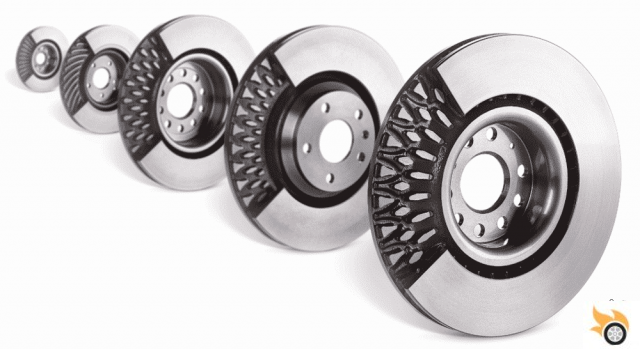
Introduction to the braking system
The braking system is one of the most important parts of a car, since it guarantees the safety of both the driver and the passengers. The brakes allow the vehicle to stop in a controlled and safe manner, avoiding accidents and collisions. In this article, we will explore the different types of brakes for cars, how they work, their secrets, and how to choose the best type of brake for your vehicle.
Types of car brakes
There are several types of brakes used in cars, each with its own characteristics and advantages. Next, we will analyze the most common types:
Disc brakes
Disc brakes are the most widely used in most modern cars. They consist of a metal disk that rotates along with the wheel and a clamp that exerts pressure on the disk to stop the movement. Disc brakes offer excellent stopping power, heat resistance, and durability.
Drum brakes
Drum brakes are less common on today's cars, but are still used on some older models. These brakes consist of a metal drum that rotates with the wheel, and shoes that expand to put pressure on the drum and stop it from moving. Although drum brakes are less efficient than disc brakes, they are cheaper and easier to maintain.
ABS brakes
The ABS (Anti-lock Braking System) is an advanced technology that prevents the wheels from locking during hard braking. This allows the driver to maintain control of the vehicle and reduce stopping distance. ABS brakes are especially useful in emergency situations and slippery road conditions.
how car brakes work
To understand how car brakes work, it is important to know the main components of the braking system:
Brake pedal
The brake pedal is the device the driver uses to apply pressure and activate the brakes. Depressing the pedal transmits hydraulic force to the brakes, bringing the vehicle to a stop.
Brake fluid
Brake fluid is essential for the proper functioning of the braking system. This fluid transmits the pressure exerted on the brake pedal to the brakes, allowing the vehicle to be stopped effectively. It is important to maintain the proper level of brake fluid and change it regularly to ensure optimum performance.
records or drums
The discs or drums are the components that are in contact with the brake pads or shoes. When pressure is applied to the brake pedal, the pads or shoes are pressed against the discs or drums, creating friction and stopping the vehicle from moving.
Brake pads or shoes
The brake pads or shoes are responsible for generating the friction necessary to stop the vehicle. These parts wear out with use and must be replaced periodically to maintain optimum brake performance.
Secrets and advice on car brakes
Here are some secrets and tips on car brakes that you may find useful:
regular maintenance
Performing regular maintenance on the brakes is essential to guarantee their correct operation and prolong their useful life. This includes checking the level of brake fluid, the wear of the pads or shoes, and the cleanliness of the discs or drums.
defensive driving
Adopting defensive driving can help you reduce brake wear and avoid hard braking situations. Keep a safe distance from the vehicle in front, anticipate maneuvers and avoid sudden acceleration and braking.
How to choose the best type of brake for your car
When choosing the best type of brake for your car, you should take several factors into account:
driving type
If you mainly do urban commuting and need to brake frequently, disc brakes may be the best option due to their ability to dissipate heat more efficiently. On the other hand, if you drive mainly on highways and don't make frequent hard stops, drum brakes may be a cheaper alternative.
Budget
Budget is also an important factor to consider. Disc brakes are typically more expensive than drum brakes, both in terms of installation and maintenance. If you're on a tight budget, drum brakes may be a cheaper option.
Frequently Asked Questions (FAQs)
1. What is the useful life of the brake pads?
The useful life of the brake pads can vary depending on the type of driving, road conditions and the quality of the pads. In general, brake pads usually last between 30,000 and 70,000 kilometers. However, it is important to perform regular checks and replace pads when worn to ensure optimum brake performance.
2. When should I change the brake fluid?
Brake fluid should be changed every two years or every 40,000 miles, whichever comes first. This is because brake fluid tends to absorb moisture over time, which can affect its performance and reduce braking effectiveness. Changing your brake fluid regularly is critical to maintaining a safe and efficient braking system.
Conclusion
In short, the brakes are a fundamental part of any car and guarantee safety on the road. Knowing the different types of brakes, their operation, secrets and how to choose the best type of brake for your vehicle will help you make informed decisions and maintain an efficient braking system. Remember to perform regular brake maintenance and adopt defensive driving to ensure your safety and the safety of others on the road.
We hope this article has been useful to you. If you have any questions or comments, feel free to leave them below. We would love to hear your opinion!
Until next time!


























